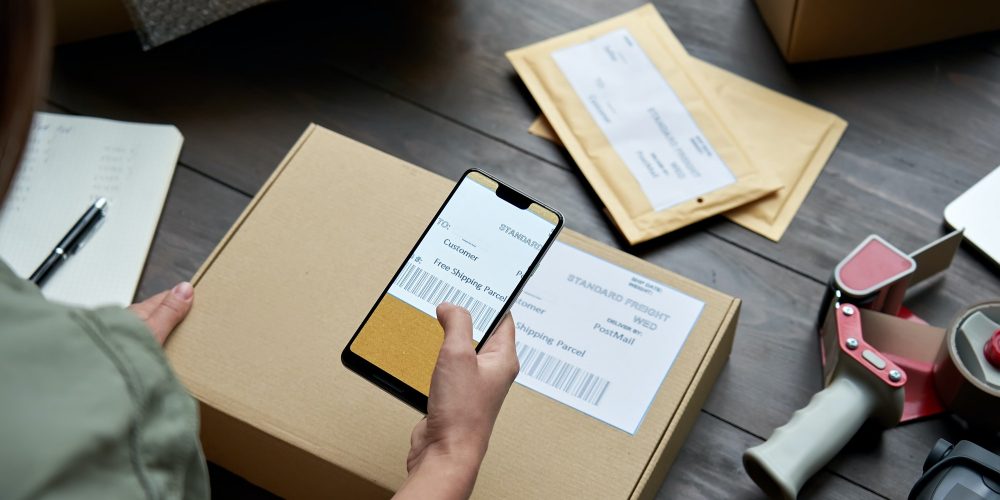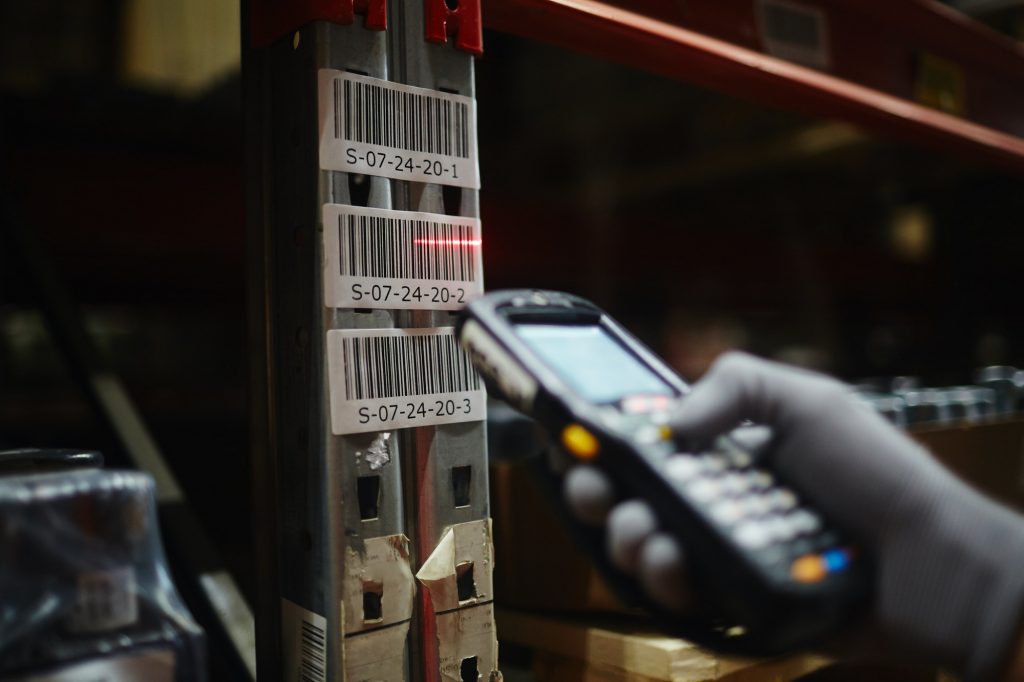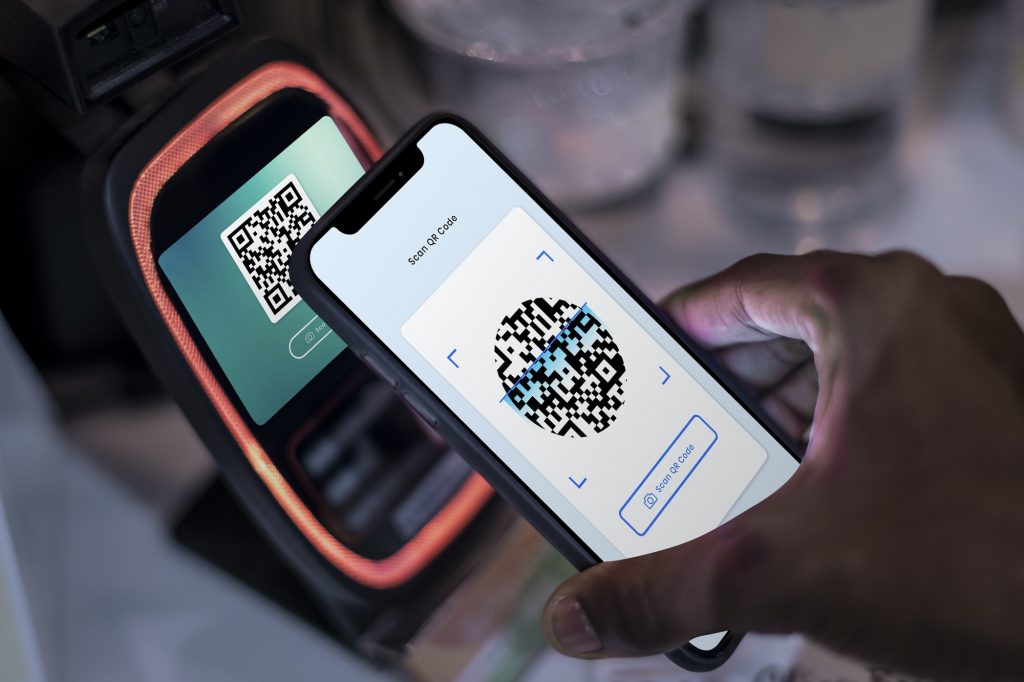What’s The Difference Between A QR Code Scanner And A Barcode Scanner?

It seems today that nearly every aspect of our personal, public, and professional lives is rapidly becoming digitized. What were once plans, processes, and records have become applications, digital workflows, and expansive databases. However, there will always be a distinct need to manage those items of life and business that must remain analog. Additionally, as our digital means continue to grow, the ability to effectively direct digital actions becomes extremely important.
For these needs, companies utilize solutions that can encode key data into a medium that can exist in a physical, visual world and manage the flow of information from one space to another. Two prime examples of this are barcode scanners and QR code scanners. Both facilitate the translation of physical data into digital. Today, we’ll examine both technologies and see how they differ in their approach, advantages, and applications.
Barcodes

What Is A Barcode?
As stated before, a barcode is one way to visually encode information, allowing that information to be carried in a physical form until it needs to be read by a digital management system. The black lines and numbers on a barcode utilize a specific taxonomy that attributes information to the different designs and combinations that are possible. In theory, the barcode can store as much information as necessary so long as the barcode can grow in width.
How Do Barcode Scanners Work?
Barcode scanners are made up of three main components that drive their processes. First is the lighting element. You’ve no doubt been made aware of the red “laser” that you use to scan the barcodes on your groceries. This is a prime example of a lighting element. When the system reads a barcode, it is reading the reflection of the physical barcode. The laser light creates this reflection for the rest of the scanner to read.
The second component is the scanner. While the entire system is referred to as a scanner, this part of the device reads the code provided by the lighting element and transfers that analog data down the system to be translated, displayed, logged, or whatever function the data serves in your system.
The final piece is the decoder. Simply put, the decoder is the part of the barcode system that translates the physically encoded information into digital signals that it sends to the computer system. Decoders can be located in different parts of the system but they always exist between the light element and the connection back to the main computer.
What Are The Advantages Of A Barcode Scanner?
Barcode scanners are a proven and accepted technology. Their use has penetrated multiple areas of commerce, production, and daily life. This widespread presence has led to progressive developments and optimizations that ensure a smooth and efficient process.
These types of scanners also make use of an array of information taxonomies. So one system can be built around a variety of environments and needs. This is why you’ll find major distribution, information, and consumer goods companies taking full advantage of their barcode scanner systems.
The longstanding and prolific use of barcode scanners also means that repair technicians have a large history to pull on in order to service these units. Our teams of repair personnel can effectively identify and address regular maintenance issues, and troubleshoot problems with the technology to allow for a longer device lifespan.
QR Codes

What Is A QR Code?
When most people think of a QR code, they immediately imagine the classic square shape filled with various small black and white boxes of different sizes. Much in the same way that a barcode uses a series of lines and numbers to encode information, QR codes use this unique visual representation to achieve a similar task.
Different elements of a QR code seem to be universal from code to code, these elements are in place to give cameras and sensors a frame of reference to read the code. Because the codes include these guideposts, QR codes can take on different colors, shapes, and sizes than other types of encoded information.
How Do QR Codes Work?
QR codes employ much of the same technology and approach that barcodes do. They contain information that has been visually encoded and prepared for a scanner to read. The main difference is in how a QR code organizes this information.
A barcode organizes data horizontally along a line. In theory, the only limit on the amount of data that can be encoded is in how long the code is allowed to be. A QR code circumvents this limitation by encoding data horizontally and vertically.
However, not all QR codes are created with the same capabilities since all QR codes are given a letter code that determines the amount of the physical code that can be obstructed. These amounts are represented as ratios and scale as the code grows in size.
What Are The Advantages Of A QR Code Scanner?
QR codes possess a key function and difference from more traditional encoded mediums. QR codes are able to interact with a smartphone camera. This allows anyone with such a device to carry an entire scanning and decoding system with them at all times.
This main advantage has made QR codes popular with marketers, promoters, and advertisers.
QR codes also have such a high level of versatility that they can actually be customized and designed to take on different shapes and represent data in different ways.
Do All Barcode Scanners Read QR Codes?
There are two classes of barcodes: 1D and 2D. 1D codes, such as the UPC code, are usually variable-width black and white spaces. 2D codes, such as QR codes and Data Matrix, use squares, hexagons, and other shapes to store data. Not all barcode scanners can read all barcodes.
QR codes belong to the group of 2D barcodes. Unlike 1D barcodes, they consist of different squares, dots, hexagons, and other shapes to encode data. This unique structure requires a specialized 2D barcode scanner to accurately read QR codes. It’s important to note that standard or 1D barcode scanners are unable to read QR codes.
When using a 2D barcode scanner, it captures a picture of the entire image of the QR code all at once. This complete image is then analyzed by a decoding algorithm to define the information contained within the code. This is why it is essential to opt for a 2D barcode scanner if you want to read QR codes accurately and efficiently.
So, in conclusion, not all barcode scanners can read QR codes. To ensure successful scanning and decoding of QR codes, it is necessary to use a dedicated 2D barcode scanner that is specifically designed to handle the unique structure and encoding of QR codes.”<
Industry Uses For Barcode And QR Code Scanners
Barcode scanners and QR code scanners can be implemented in a wide range of industries including:
- Retail Shopping
- Logistics and Distribution
- Small and Large Scale Manufacturing
- Healthcare
- Public Sector
QR CODE SCANNER AND A BARCODE SCANNER FAQs
Which Is Better, A Barcode Scanner Or A QR Code Scanner?
The amount of data a QR code can hold over a barcode is arguably the most significant difference. QR codes are two-dimensional as opposed to their one-dimensional barcode counterparts. This means that QR codes can contain much more data. Barcodes on items we purchase are not unique.
What Are The Differences Between A QR Code And A Barcode?
Whereas a barcode only contains information in a horizontal direction, a QR code contains information in both a horizontal and a vertical direction, hence the name “2-dimensional code.” Due to this structural difference, a QR code contains a hundred times more information than a barcode and has greater potential.
Do All Barcode Scanners Read QR Codes?
There are two classes of barcodes: 1D and 2D. 1D codes, such as the UPC code, are usually variable-width black and white spaces. 2D codes, such as QR codes and Data Matrix, use squares, hexagons, and other shapes to store data. Not all barcode scanners can read all barcodes.
What Does QR Stand For?
The QR – which stands for “quick response” – code is basically a barcode on steroids. While the barcode holds information horizontally, the QR code does so both horizontally and vertically.
What Is A Barcode Scanner And How Does It Work?
All barcode readers use a light source and sensors to detect and measure the intensity of light reflected back by the white spaces within the unique pattern of parallel bars. The reflected light is detected through a photodiode, producing an electronic signal that corresponds to the barcode patter